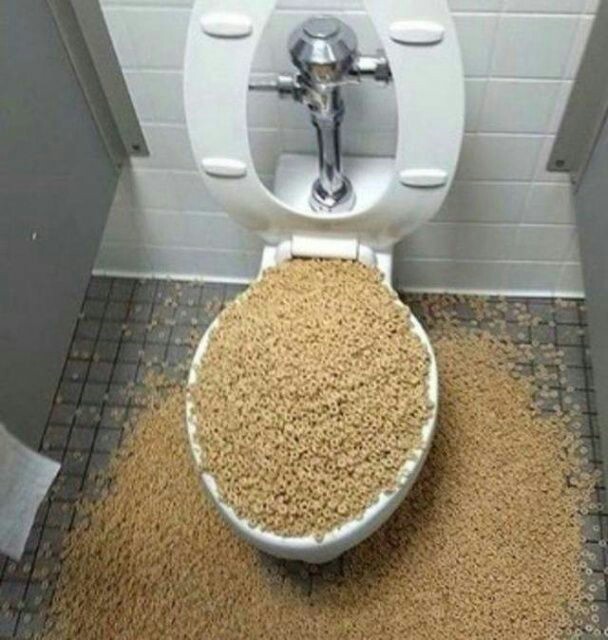Can You to Dispose of Food in the Toilet?
Can You to Dispose of Food in the Toilet?
Blog Article
Almost everyone seems to have their unique theory when it comes to Is it safe to flush food (especially rice) down the toilet?.

Intro
Lots of people are usually confronted with the issue of what to do with food waste, especially when it involves leftovers or scraps. One typical question that arises is whether it's fine to flush food down the bathroom. In this write-up, we'll explore the reasons why people might think about purging food, the repercussions of doing so, and different approaches for appropriate disposal.
Reasons individuals may consider purging food
Absence of understanding
Some individuals might not recognize the possible harm triggered by flushing food down the toilet. They may mistakenly think that it's a safe technique.
Benefit
Purging food down the bathroom may look like a fast and easy remedy to disposing of undesirable scraps, especially when there's no nearby trash bin readily available.
Negligence
In many cases, people might simply select to flush food out of large negligence, without considering the effects of their actions.
Repercussions of flushing food down the commode
Ecological effect
Food waste that winds up in waterways can contribute to contamination and injury marine environments. In addition, the water made use of to flush food can stress water sources.
Pipes issues
Purging food can result in clogged up pipes and drains, creating costly plumbing fixings and troubles.
Types of food that need to not be flushed
Coarse foods
Foods with fibrous appearances such as celery or corn husks can obtain tangled in pipes and cause obstructions.
Starchy foods
Starchy foods like pasta and rice can absorb water and swell, resulting in blockages in pipelines.
Oils and fats
Greasy foods like bacon or cooking oils need to never be purged down the commode as they can solidify and cause blockages.
Proper disposal techniques for food waste
Making use of a waste disposal unit
For homes equipped with waste disposal unit, food scraps can be ground up and purged through the plumbing system. However, not all foods are suitable for disposal in this way.
Recycling
Certain food packaging materials can be reused, reducing waste and minimizing environmental effect.
Composting
Composting is an environmentally friendly method to throw away food waste. Organic products can be composted and made use of to improve dirt for horticulture.
The value of appropriate waste monitoring
Reducing environmental injury
Proper waste management techniques, such as composting and recycling, help decrease pollution and protect natural deposits for future generations.
Securing pipes systems
By preventing the method of flushing food down the bathroom, home owners can protect against pricey pipes repair work and keep the stability of their plumbing systems.
Verdict
Finally, while it might be alluring to flush food down the commode for convenience, it's important to understand the prospective repercussions of this action. By taking on appropriate waste management methods and taking care of food waste responsibly, people can contribute to much healthier plumbing systems and a cleaner setting for all.
FLUSH FOOD DOWN THE TOILET?
FLUSHING FOOD CAN CAUSE BLOCKED DRAINS IN YOUR HOME
All of the plumbing fixtures in your home are connected to the same sewer pipe outside of your home. This outdoor sewer pipe is responsible for transporting all the wastewater from your home to the Council sewer mains. Even small pieces of food that go down the kitchen sink can cause problems for your sewer. It should therefore be obvious that flushing larger bits of food, such as meat, risks a clog in either the toilet itself or the sewer pipes. Flushing greasy food is even more problematic because oil coagulates when it cools, coating the interior lining of your pipes.
THE TOILET IS NOT A BIN
Food isn’t the only thing that people shouldn’t be flushing down the toilet. People use the toilet to dispose of all kinds of things such as tampons, makeup wipes, dental floss, kitty litter and even underwear. Water goes to great lengths to educate residents about the high costs and stress placed on wastewater treatment systems simply from people flushing the wrong stuff down the toilet. It costs taxpayers millions of dollars each year, and homeowners thousands in blocked drain repairs.
FLUSHING FOOD IS A WASTE OF WATER
Flushing food is a waste of our most precious resource - water. In June this year Level 1 water restrictions were introduced to protect water supply from drought conditions. Much of New South Wales continues to be affected by prolonged drought with recent figures revealing up to 97 per cent of the state remains in drought. Depending on whether you have a single or dual flush toilet, every single flush uses between five and 11 litres of water. In the current climate this is a huge amount of water to be wasting on flushing food that should be placed in the bin (or better yet, the compost).
https://www.jabplumbingsolutions.com.au/blog/can-you-flush-food-down-the-toilet

As a serious reader on , I think sharing that excerpt was sensible. Are you aware of someone else who is excited by What Can Happen If You Flush Food Down the Toilet?? Why not promote it. Thanks so much for your time invested reading it.
Book Instantly Report this page